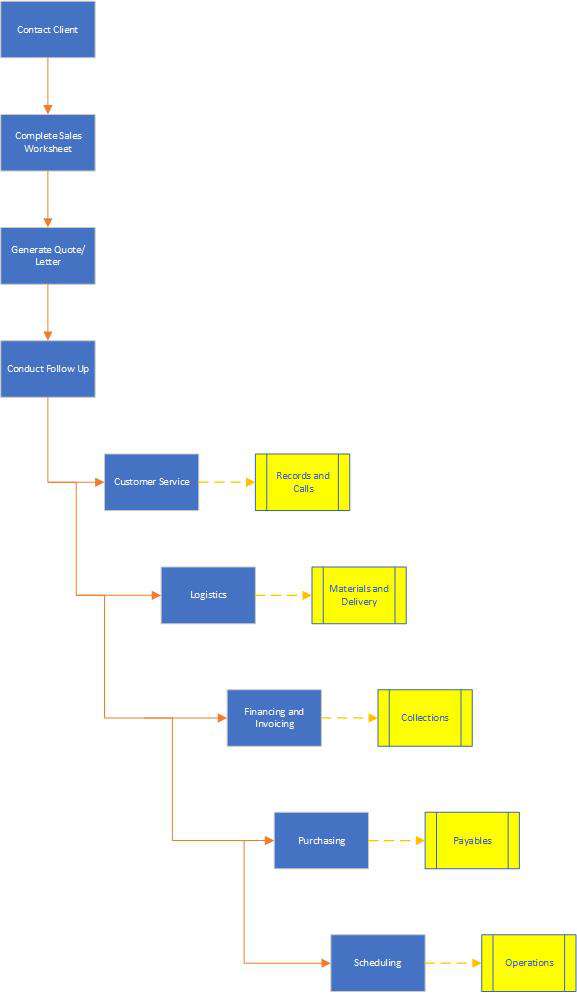
Enterprises across all industries are constantly looking for ways to improve their organizational efficiency and streamline their processes.
By digitizing their workflows, companies are able to optimize existing processes, enhancing access, control, security, and collaboration, ultimately transforming their entire business!
Firms functioning with an abundance of hardcopy-based processes often suffer from greater inefficiency and lack of security, as a result, many organizational decision makers in today’s corporate world are seriously considering workflow digitization to solve their problems.
In this blog, we’ll have a look at three key steps that enterprises can take to effectively digitize their workflows.
Step 1: Review All Existing Processes
Conducting a comprehensive review of the entire enterprise workflow and all underlying processes that it consists of is the most important component of digitization.
In organizations with several complex workflows, many business processes tend to go unaccounted for, either they are being entirely left out of organizational documentation, or having workflow documentation that is a complete and total misrepresentation of their actual execution.
After accounting for the documentation of all processes that make up an organization’s workflow or workflows, the priority shifts to identifying a process that is suitable to begin digitization with.
Step 2: Identify a Process to Initiate Digitization
Processes that are heavily paper-reliant are a great starting point for enterprise digitization. Organizations using Managed Print Services can leverage the analytics provided by their service provider to assess their workflows and select processes with a high amount of hardcopy yield.
Managed Print Services feature real time, up to the minute print statistics on enterprise printing fleet, end-users, print jobs, and many other analytical tools.
This information is of great help to decision makers when looking to make informed decisions regarding enterprise printing, and specifically helpful for decisions related to digitization of an enterprise’s workflow.
It is important for companies to ensure that the first few processes they digitize are processes that can be digitized without a high degree of complexity and with relative ease. Business processes requiring total re-engineering should be left until easier process have first been digitized successfully.
By the same token, even the simplest of process changes geared towards digitization would require background knowledge and information before selection and implementation of these minor changes.
Stakeholder consultation aimed at identifying digitized process impact on customers, and enterprise cost and time savings, are vital pieces of information that should be thoroughly investigated prior to process selection.
Having mentioned this, the processes digitized in the early phases of digitization should be ones that are game-changers, having the ability to attract approval from high level decision makers in your organization.
As a simple guideline, beginning digitization of workflows with processes that are simple to digitize, yet revolutionary in their impact, is the way to go!
Step 3: Begin Transformation of the Selected Process
Using the process documentation gathered in step 1, organizations should classify process components and ensure that key stakeholders are involved in the digital transformation from the very get go!
Enterprises should begin with mapping of the selected process in its existing form, identifying bottlenecks and areas for improvement, and finally, a joint decision detailing the plan for digitization.
Potential conflicts with inter-related business processes, and desired outcomes, should be clearly defined before implementing the digitization plan.
Typical Workflow Review
The following is an example of a typical enterprise workflow for a sales person.
Digitization of the highlighted sub-processes can significantly reduce bottlenecks and increase process efficiency while drastically reducing cycle time, ultimately enhancing enterprise productivity in the bigger picture!
Next Steps: Continue Gradual Transformation!
Upon completion of your first process digitization, perform a detailed evaluation with stakeholders once again, pertaining to how the transformed process has improved your workflow.
After visualizing the positive impact of the digitization of your first few processes, you can gradually progress with digital transformation of the rest of the organizational workflows.
With every additionally transformed process, the effects of digitization should eventually come together for overall streamlined and efficient company operations!
Are you interested in digitizing your workflow and improving overall productivity for your company? Make sure you take the steps outlined in this article and join the journey towards a digital world today!


